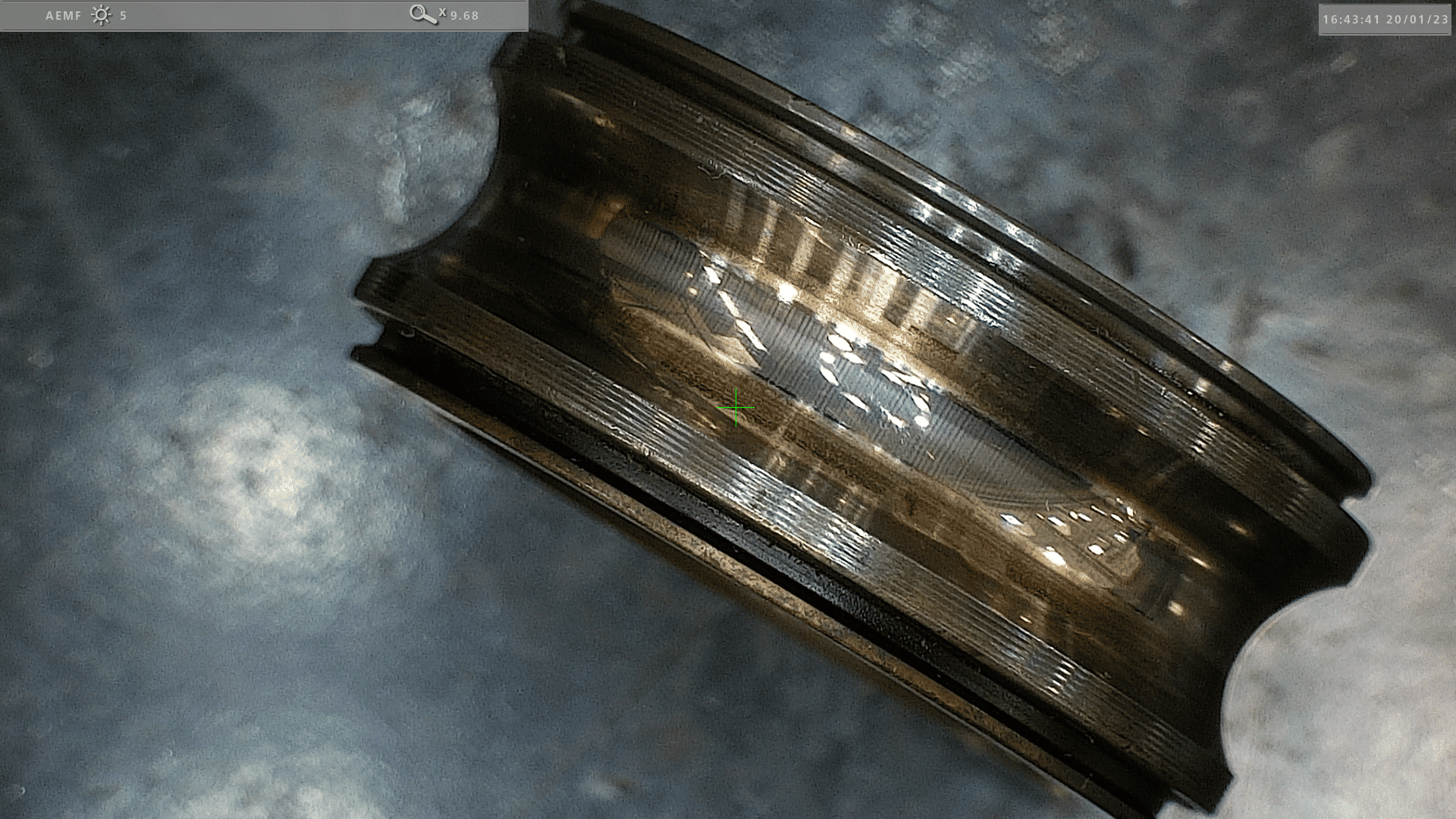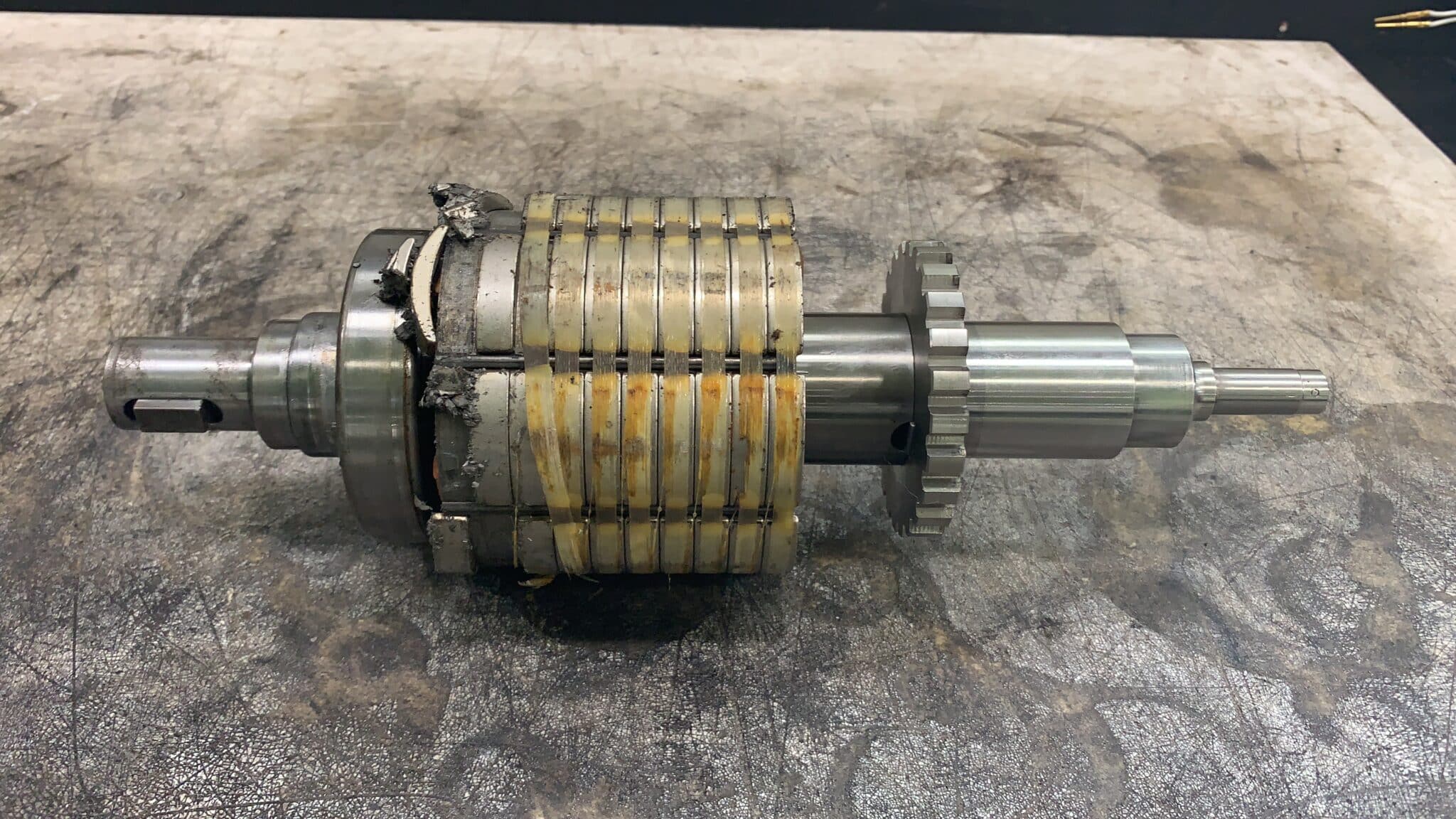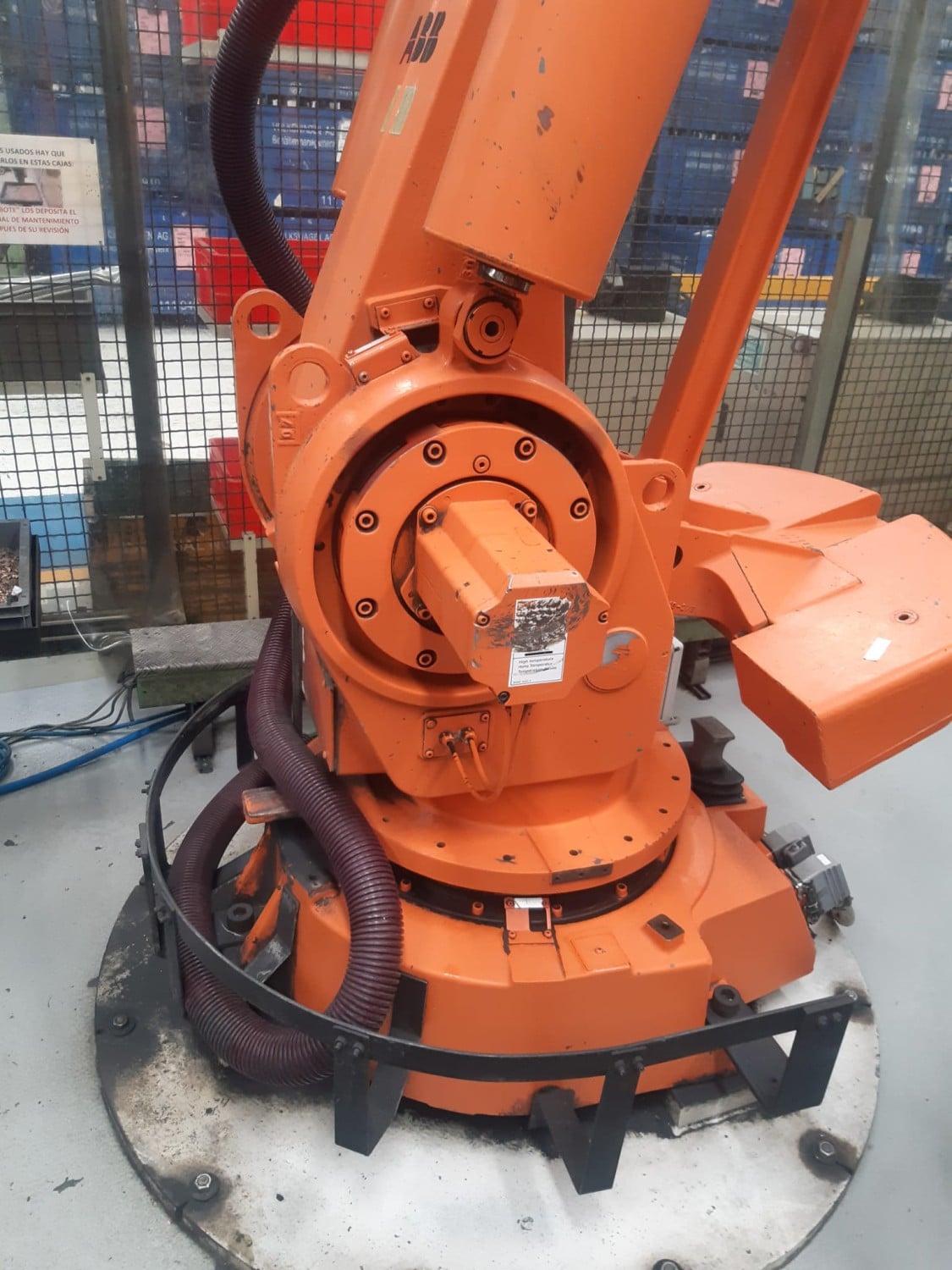When we checked the working of the servomotor before repairing it, our engineers detected a problem in the front cover where the bearing is, because the shaft rotated irregularly, as you can see in this video.
Once the servomotor had been disassembled, we could analyse its condition. The front cover housing was in good condition. However, the bearing was without lubricant and with serious damage in the bearing cage. In addition, we saw the typical iron dust contamination (rusty colour) inside the motor due to the broken bearing.
Having received two motors from the same customer with the same problem, we requested information about how the motors were working to be able to find out the reason for their poor condition.
The answer was that they worked in a place that required a pulley and belt. If the tension of the latter is inappropriate the servomotor’s front cover, is overworked and causes the bearing to break as in this case. One way of preventing this problem is to check the pulleys’ tension.
The repair process of the servo motor bearing
Inspection of the servomotor before disassembly
- Photographs / Videos.
- Identification of the cables
- Mechanical configuration
- Voltage generator/ Phases / Equilibrium.
- Switching (encoder)
- Operational test
Inspection of the servomotor after disassembly
- Bearings, shafts, bearing housings, seals.
- Stator test
- Resistance and high voltage test
- Magnetic field
- Feedback.
- Quality dimensional controls
Assembly of the servomotor
- Cleaning of each servomotor component
- Assembly of the bearings, feedback (encoder)…
Final inspection test
- Switching (encoder)
- Test/verification on test bench
- Taking data, resistance, insulation
- Photographs / Videos.
Apart from carrying out the repair, it is important to provide the customer with the necessary information so that this type of problem will not be repeated.
How to detect inappropriate tension
The tension gauge
This SKF belt tension gauge SKF (TENSIOMETER SKF DIGITAL – PHL FM 10/400)
is a precision tool for measuring the tension of the belts. The results are obtained quickly and reliably and what is more important is that this measurement can be repeated. The tool is also extremely easy to use and reduces de risk of errors.
With thermographic camera
The great majority of problems and failures in an industrial environment, whether they are mechanical, electrical or a production defect, are preceded by changes in temperature that can be detected by monitoring the temperature and this reduces the risk of failure in your servomotor.

Vibration analysis
WORN, LOOSE OR MISMATCHED BELTS (Charlotte table)
Belt frequencies are below the RPM of either the motor or the driven machine. ‘Nhen they are worn, loose or mismatched, they normally cause310 4 muijiples of belt frequency. Often 2X belt freq. is the dominant peak. Amplitudes are normally unsteady, sometimes pulSing with either driver or driven RPM. On timing belt drives. wear or pulley misalignment is indicated by high amplitudes at the liming Belt Frequency. Chain drives will indicate problems at Chain Pass Frequency which equals If Sprocket Teeth X RPM.
Misaliing of Belt / Pulley (Charlotte table)
Misalignment of pulley produces high vibration at IX RPM predominantly in the axial direction. The ratio of amplitudes of driver to driven RPM depends on where the data is taken, as well as on relative mass and frame stiffness. Often with pulley misalignment, the highest axial vibration on the motor will be at fan RPM, or vice versa. Can be confirmed by phase measurements by setting Phase Filter at RPM of pulley with higheSl axial amplitude; then compare phase at this panicular frequency on each rotor in the axial direction.
Eccentnc pulleys cause high vibration at 1X RPM 01 the eccentric pulley. The amplitude is normally highest in line with the belts, and should showup on both driver and driven bearings. tt is sometimes possible to balance eccentric pulleys by attaching washers to taper-tock bolts. However, evennbaJanced, the eccentricrty will still induce vibration and reversible fatigue Slresses in the belt. Pulley eccentricity can be confirmed by phase analysis showing horizontal & venical phase differences of near1y 0° or180″.
More information: Servo Motor Repair






